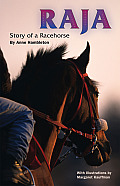In May the Young Adult Library Services Association (YALSA) is hosting National Library Legislative Day (NLLD) to talk to legislators and their staff about the significance of libraries for teen patrons. To build awareness of how libraries serve teens, YALSA has invited bloggers everywhere to post about why teens need libraries and librarians are important to them. To help with the effort, I interviewed two teen librarians near my home in Portland, Oregon:
- Susan Smallsreed, Youth Librarian at Northwest Library, Multnomah County Library
- Mark Richardson, Young Adult and Reference Librarian at Cedar Mill Community Library
Here’s what they had to say:
Why do you think libraries are relevant for teens?
SS: Teens need safe places in which to hang out, do homework, get information and find entertainment. Libraries do all these things for free, a very good price! We offer computers & wifi access, clubs, activities, books, movies, music CDs, and many of these are available 24/7!
MR: I think libraries are as relevant as we make them for teens. If libraries take the time and effort to find out what teens need and want from their library, it will be relevant to them. This is why we started the Teen Library Council here, to learn from teens what they want. As a teen librarian, I can guess about what they will check out or I can ask them. I can guess about what programs they want or I can ask them. The council has helped me plan better programs and it has given them valuable leadership skills in the process. I look for ways that they can take responsibility for different projects. That helps them figure out what they like doing and when they have bitten off more than they can chew. In addition to this, there are many resources in the library and on our website that are great for teens. The trick is getting the teens knowledgeable about them.
Why is it a good idea for a teen to make a connection with a librarian as opposed to simply wandering the aisles?
SS: Librarians help you find what you REALLY want. We can save a lot of time and energy. But I’ve also found that library staff have to make teens feel welcome in the library. When teens know you, or at least your face, they are more likely to ask for assistance with any library issue, not just finding a book.
MR: One of the things that surprised me about having a library council was that quite often, I know more about new teen books than the kids do. I thought they would be giving me advice about books, but I am frequently the one letting them know about something new and great. Librarians are frequently tapped into the publishing world in a way that allows them to steer teens towards books that may be a little more challenging than the main blockbuster titles that we’ve heard about. Even those blockbusters (Twilight & The Hunger Games) were once small projects that I heard about from other Young Adult librarians long before they became mainstream hits. Code Name Verity was one of my favorites from last year that I expect more and more teens and adults to be reading in the near future.
What can librarians do for teens other than recommend books to read?
MR: As far as research goes, librarians’ roles have changed from that of a gatekeeper of knowledge to that of a pathfinder. We can help teens find that article or resource that used to be in the physical library, but which is now in an online tool somewhere. We can help teens sharpen the information they get from Google and broaden what they can find in the great databases we have access to. Most teens are not aware that they can take practice SAT, AP, and ACT tests on one of our online tools, that we have a language tool and app called Mango that can help them with learning a language and many, many more great resources. Since we’ve lost so many school librarians lately, it becomes even more important for teens to take the extra step and see if a public librarian can help them.
Anything else you’d like to add about the importance of libraries for teens?
MR: Libraries are great places to explore ideas and concepts. Being a teen is almost literally an act of exploration. Libraries and teens should go together like peanut butter and jelly. The reason so many adults gravitate towards YA literature is that they want to read about the hopefulness of an age where the main character is making fundamental choices about who they are going to be. So much adult literature is about loss and regret. Teen lit, even when it is dark, is about finding a way towards hope and the light.
 Inside Outside by Lizi Boyd is a great picture book to show the multiple activities children can engage in both in the house and out in the yard.
Inside Outside by Lizi Boyd is a great picture book to show the multiple activities children can engage in both in the house and out in the yard.




